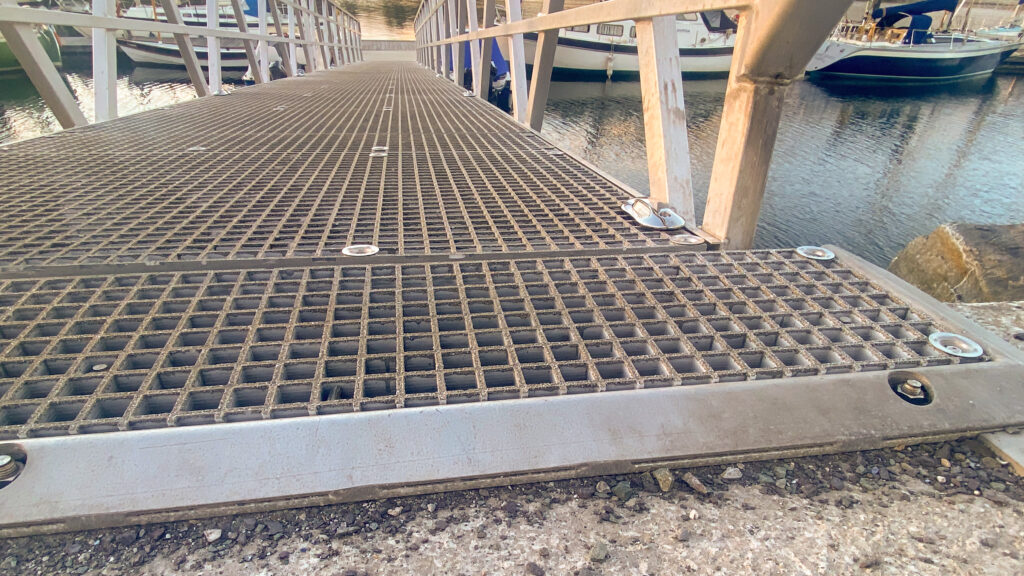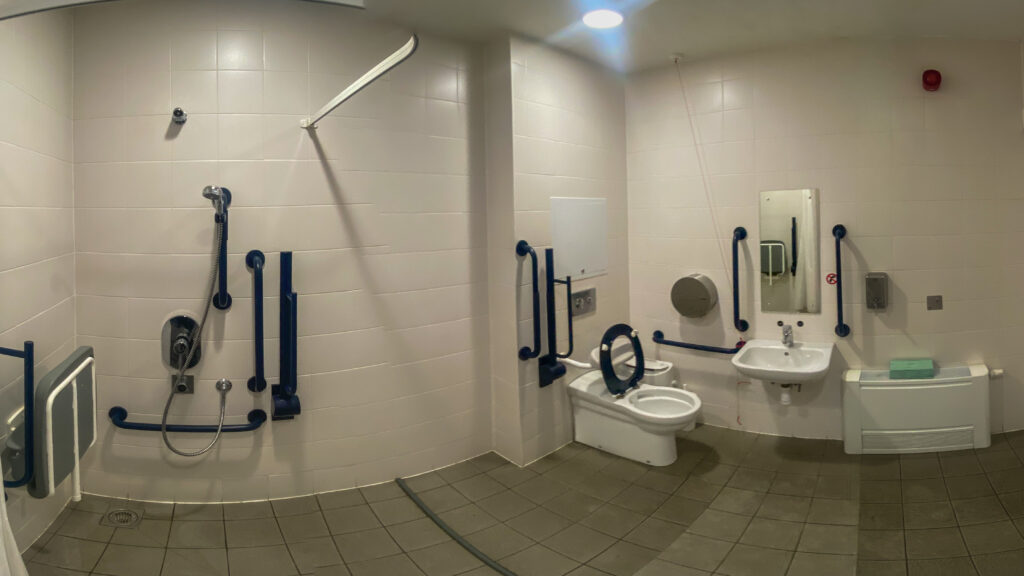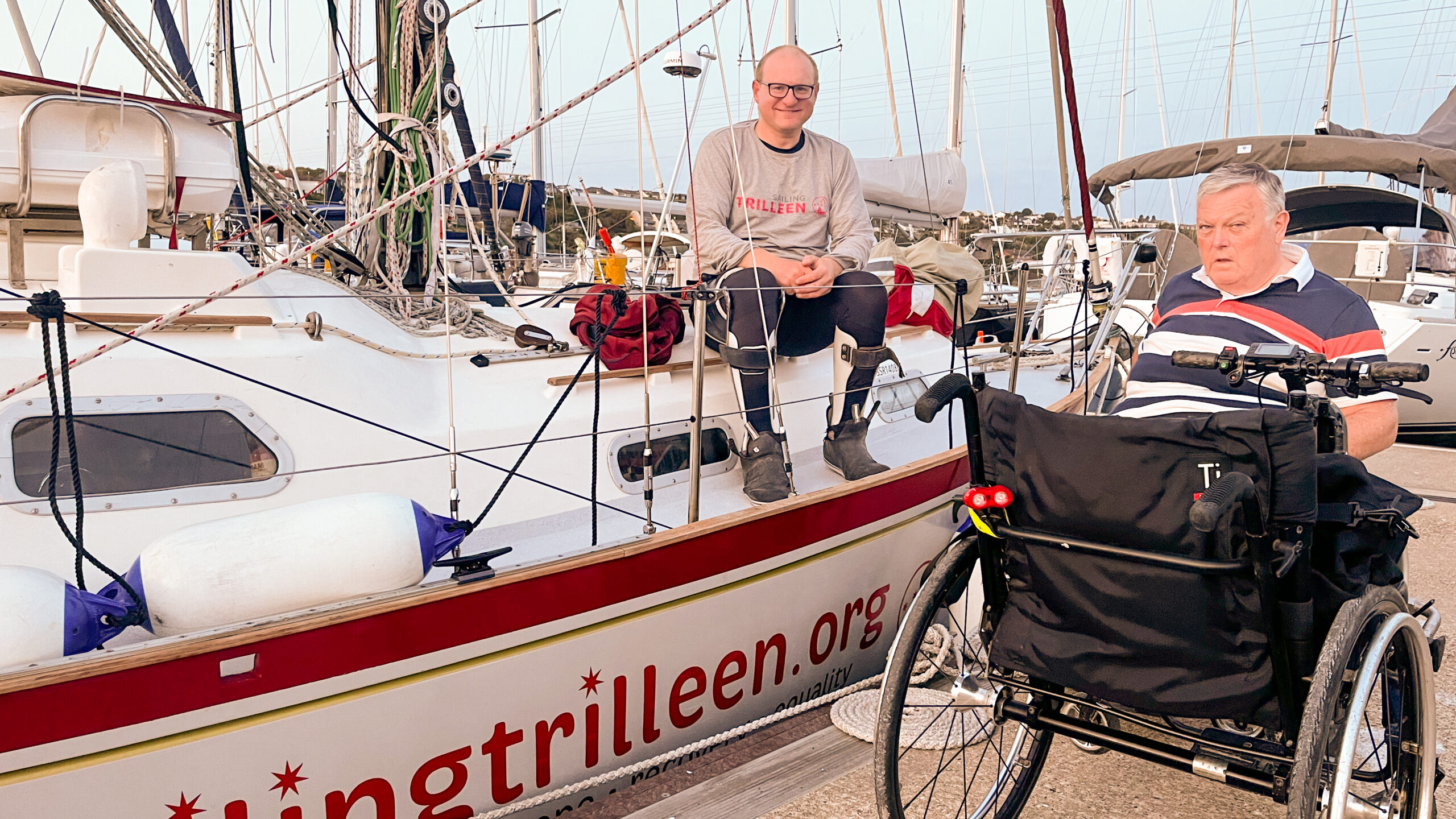As a solo disabled sailor, I have had the opportunity to explore many different marinas and anchorages around the UK. While some of these places have been accessible and welcoming, others have presented challenges due to a lack of accessibility in their design and infrastructure. Accessibility is not just about creating equal opportunities for people with disabilities. It is also about preserving and expanding the sailing community as a whole. Without accessibility, we lose older sailors to age-related disability, our venues remain less accessible to young families with children, and the contribution the waterside economy can make to local communities is limited.
Vignette
I had just relaunched Trilleen after another grinding refit. I was immensely relieved to be back on the water in time to meet the deadline for my departure to points north after this second refit of my time with Trilleen. Despite the kindness of yard staff, and the support of friends the uneven gravel strewn yard coupled with the terrifying ramp that leads from the road to my sailing club had nearly broken me, and finally destroyed my power chair. Like so much disability kit this was privately purchased, and the replacement costs would make even big boat owners stop and think.

Looking forward to better days I turned upstream into the ebbing tide and drizzle and approached my berth. Stopping Trilleen smartly alongside I stepped ashore with the head and stern ropes in my hands and both legs, as usual wrapped in heavy orthotic splints. A moment later, winded I was staring at the sky with a jackhammer in my head. By good fortune I was still holding the head rope and lassoed it round a cleat as Trilleen began to slide back towards the sea. My first attempt at sitting up failed dramatically when my hands slipped in a thick slime of algae that had accumulated on the berth and in which my feet had found precisely zero purchase.
That might have ended my solo Round Britain and Ireland sail before it had begun. Fortunately it didn’t.
Whole system accessibility is the only effective approach
During my madcap voyage it has been by turns fun and frustrating to be thinking about human factors, accessibility and and inclusion in the context of my port visits during this season. Piecemeal improvements to access rarely provide the degree of commercial return hoped for by waterside facilities. Only a whole system approach which includes alterations to physical infrastructure, staff training, operations practices and the organisations the facility contracts will results in transformative returns. Whole system approaches to access create inclusive and supportive environments to the widest constituency. This includes people with hidden and visible disabilities as well as other frequently marginalised parts of society.
Kind and receptive staff at marinas
In my Round Britain sail as a solo disabled sailor I’ve been encouraged by how kind the staff at every harbour and marina I’ve visited have been. I’ve also found both managers and operational staff very receptive to comments about access. The level of understanding about how accessibility can leverage improved commercial benefit has however been very low. Whole system approaches to improving access, in addition to benefiting disabled people creates the environment which millennials expect in an attraction or venue and makes them more likely to transition from seeking experiences into becoming regular customers. Changes to accessibility also allow older often more affluent patrons, to avoid giving up sailing when they inevitably acquire age related disability. In the same vein better access makes spaces more welcoming to young families with children who are in nappies or still using strollers.
What is a whole system approach

Whole system approaches to accessibility stretch far beyond the perennial ‘fixing the toilets and showers’ perspective. This is about creating a welcoming and inclusive culture within the sailing community. This means fostering a sense of belonging and acceptance for people with disabilities and others currently excluded, and actively promoting and supporting their participation in sailing activities. Specific pointers would include:
- Identifying and understanding the needs and perspectives of individuals with disabilities: This involves conducting research and consulting with people with disabilities to understand their unique needs and experiences, and to identify barriers and challenges that they face in accessing services and facilities.
- Identifying and understanding the needs and hopes of individuals currently under-represented in boating and sailing. While that includes disabled people it might also credibly include ethic minorities, people living in disadvantaged areas and other groups currently underrepresented in the sport. This involves conducting research and consulting with each group to understand their unique needs and experiences, and to identify barriers and challenges that they face in accessing services and facilities.
- Designing and implementing accessibility measures that are comprehensive and integrated: This involves incorporating accessibility considerations into all aspects of design and implementation, from the physical layout of buildings and facilities, to the availability of assistive technology and communication supports, to the training and support provided to staff especially in respect of attitude, communication and responsiveness.
- Ensuring that accessibility measures are regularly reviewed and updated: This involves monitoring and evaluating the effectiveness of accessibility measures, and making adjustments and improvements as needed to ensure that they continue to meet the changing needs and preferences of people from under-represented sectors
Novel engineering solutions are not needed: they exist
There are problems in the sector related to maintaining safe systems of work, designing docks and the gangways between landside and waterside infrastructure. These problems all have current engineering and human factors solutions which have been demonstrated in various locations. The issues are not therefore fundamentally an engineering problem. The choices of operators and the specifications they ask operators to work to are what needs to change.
Small and constrained by geography doesn’t mean inaccessible
The least physically accessible marina I visited was a tiny facility run by a couple. It was down a steep gravel road with a gravel boatyard, and every building had a step or massive threshold. That marina however had the best attitude by far. They knew their marina had access issues. They were committed to fixing them and had already made some important and costly gangway improvements. Their willingness to go far beyond the extra mile to put me as a disabled sailor on equal terms with the rest of their clients was striking. They were also hungry to learn and improve the facility, as they knew this would both bring commercial reward – and was the right thing to do societally.
